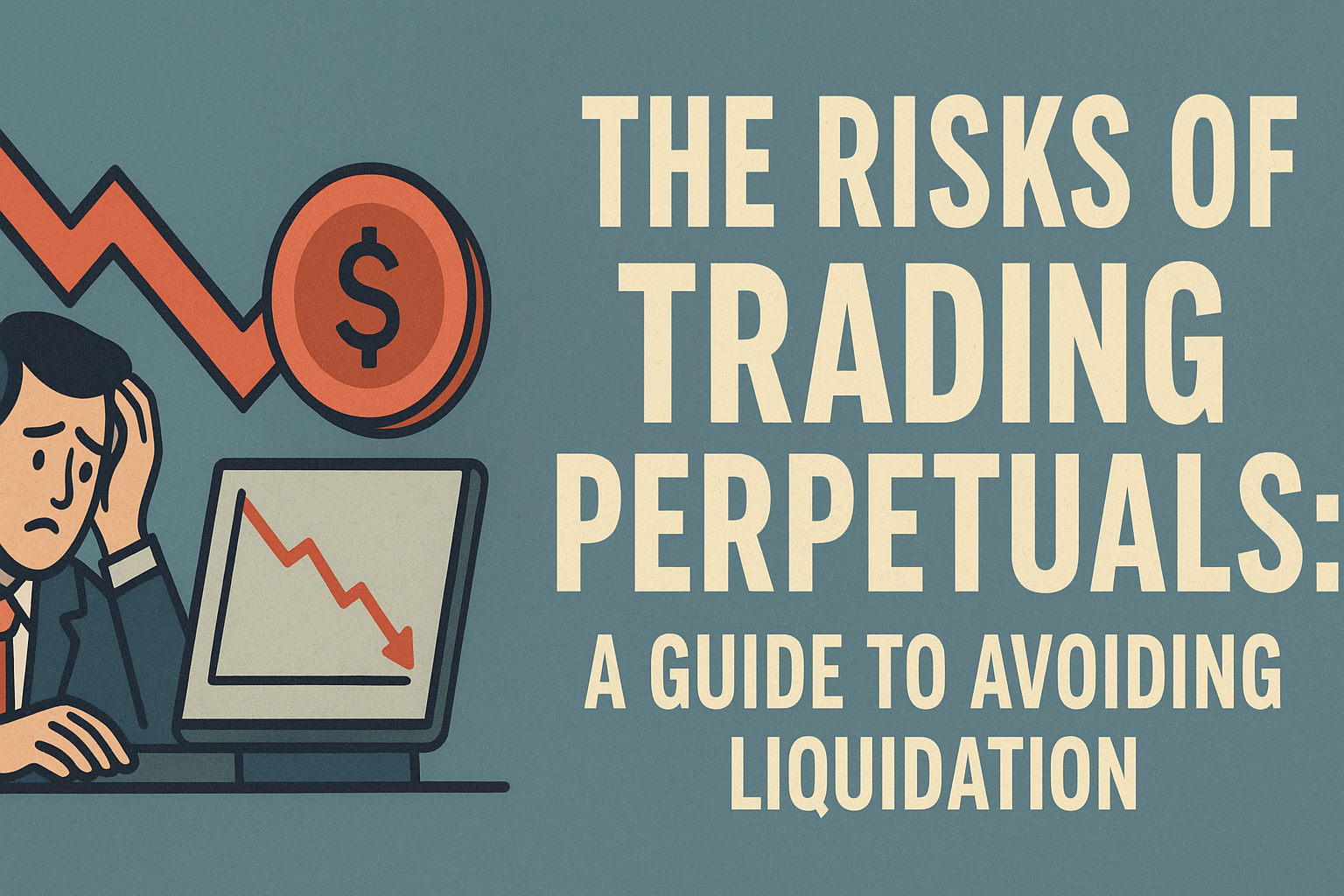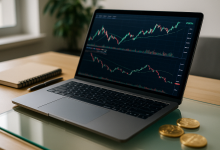The Risks of Trading Perpetuals: A Guide to Avoiding Liquidation


One of the popular financial tools in cryptocurrency and other markets is contracts. They allow traders to hedge against the price movement of an asset without a set expiration date, which is convenient. However, they also allow the use of leverage, which is the main factor that makes them both highly profitable and extremely risky.
enables you to control a large position with a small sum of capital, known as margin. While this can maximize profits, it also amplifies losses, creating the perpetual threat of liquidation.
This article guide on how to avoid liquidation while trading perpetuals despite the risk involved.
Key Takeaways
- The lower your leverage (aim for 3x-5x), the further away your liquidation price is, providing a crucial securety buffer against volatility.
- A pre-set stop-loss order placed before your liquidation price is your only guaranteed defense against a total loss of margin.
- Limit the potential loss on any single trade to 1-2% of your total trading portfolio to ensure you can survive poor runs and remain in the game.
What is Liquidation?
Liquidation is the automatic closing of a leveraged position by the platform when your account balance falls below a specific threshold, called the maintenance margin. This happens when the market price moves significantly against your trade, and your deposited margin is no longer enough to cover the potential losses. When liquidated, you lose all the capital you committed to that specific trade.
The calculation for liquidation is typically based on the contract’s Mark Price, which is a fair price calculation that prevents manipulation.
Key Risks That Lead to Liquidation
The first step to avoid liquidation is to highlight the possible cause, some of which include:
1. Excessive Leverage
This is the number one cause of liquidation. High leverage shrinks the distance between your entry price and the liquidation price. For example, a trade with $1,000 capital and 10x leverage controls a $10,000 position. If the price moves 10% against you, your $1,000 margin is wiped out, and your position is liquidated. With 50x leverage, a 2% move against you will be enough to trigger liquidation. You’re not allowing for much room for the natural fluctuation of the market.
2. Market Volatility and Price Swings
Cryptocurrency markets are known for sudden, , regarded as “wicks” or “crashes.” Even on moderate leverage, an unanticipated high-speed move against your position can liquidate you before you can act or cover with more margin. This is often a case of low-liquidity periods or near major news releases.
3. Poor Margin Management
Here, two margin terms are of significant importance:
- Initial margin: This refers to the percentage of equity needed to open the trade.
- Maintenance margin: The minimum level to support open trade.
The risk of liquidation becomes even largeger if you’re not in a excellent margin buffer—your available margin approaches the maintenance margin. Any small adverse move will easily cross the limit and result in automatic closing of your position.
4. Funding Rate Erosion
Perpetual contracts use a funding rate mechanism in order to keep their price at the nearest possible level to the spot asset price of the underlying. The rate is traded between long and short traders, usually every 8 hours. When the market is heavily one-sided (for instance, more longs than shorts), the dominant side (longs) will pay the minority side (shorts). If you’re holding a position for a while, the funding fees against you can quietly eat away at your margin, driving your position towards liquidation without even the price flinching.
Strategies to Avoid Forced Liquidation
To perpetuals securely and sustainably, you must prioritize disciplined risk management over the chase for high profits.
1. Use Low Leverage
This is the simplest and most effective defense. Beginners should stick to 3x to 5x leverage at most. Lower leverage creates a wider gap between your entry and the liquidation price, allowing your trade to withstand more market volatility without being wiped out. Only increase leverage as your experience and capital management skills improve, and even then, rarely exceed 20x.
2. Always Set a Stop-Loss Order
A stop-loss (SL) order is mandatory. It is a pre-set instruction to automatically close your position at a specific price, limiting your maximum loss. Set your SL at a point where your trade idea is proven wrong, and ensure it is placed well before your calculated liquidation price. A disciplined trader accepts a small loss (via a SL order) to preserve capital, avoiding the total loss of liquidation.
3. Position Sizing and Risk Control
Never risk more than a small percentage of your total trading capital on a single trade. A common and conservative rule is to risk no more than 1% to 2% of your total portfolio on any one setup. This means calculating your position size in case it reaches the SL, while maintaining your loss at 1-2% of your total funds. This strategy ensures that even a string of poor trades will not wipe out your account.
4. Monitor and Add Margin
Actively monitor your position’s margin ratio or “health indicator.” If a trade moves against you, and your margin ratio rises toward the danger zone, be prepared to do one of two things:
- Reduce your position size: Close a portion of the trade to free up margin and lower your risk.
- Add more margin: Deposit extra funds into the position to lower the liquidation price and give your trade more room to breathe (only if your original thesis remains valid).
5. Understand Your Margin Mode
- Isolated Margin: Only the margin allocated to that specific position is at risk of liquidation. It is recommended for beginners as losses are contained.
- Cross Margin: All available funds in your futures account are used as margin for all your open positions. This makes liquidation less likely but means if a position is liquidated, you could lose your entire account balance.
Bottom Line
Trading perpetual futures can be a powerful tool for speculation; however, it is not a get-rich-quick scheme. Liquidation is a capital preservation measure for the platform, not the trader. The only way to avoid it is through strict, disciplined risk management. Treat leverage with the respect it demands, prioritize a low leverage setting, size your positions conservatively, and always, without exception, use a Stop-Loss. Your goal is not to avoid losses entirely, but to ensure that the losses you take are small and manageable, allowing your capital to compound over time.







